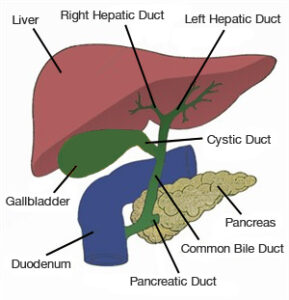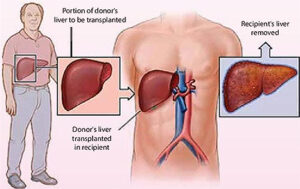1. Liver transplant :
A liver transplant is an operation that replaces a patient’s diseased liver with a whole or partial healthy liver from another person. This article explains the current indications for liver transplantation, types of donor livers, the operation itself, and the immunosuppression that is required after transplantation.
A liver transplant is an operation that replaces a patient’s diseased liver with a whole or partial healthy liver from another person. This article explains the current indications for liver transplantation, types of donor livers, the operation itself, and the immunosuppression that is required after transplantation.
Liver Anatomy and Function :
The liver is a vital organ, meaning that one cannot live without it. The liver serves many critical functions including metabolism of drugs and toxins, removing degradation products of normal body metabolism (for example clearance of ammonia and bilirubin from the blood), and synthesis of many important proteins and enzymes (such as factors necessary for blood to clot).
Blood enters the liver from two channels, the hepatic artery and the portal vein, bringing nutrients and oxygen to liver cells, also known as hepatocytes, and bile ducts. Blood leaves the liver via the hepatic veins which drain into the inferior vena cava which immediately enters the heart.
Before the procedure
To be considered for a living-donor liver transplant, both the donor and recipient must undergo thorough health and psychological evaluation at a transplant center. Transplant team will discuss the potential benefits and risks of the procedure in detail.
For example, while the procedure often may be lifesaving for the recipient, donating a portion of a liver carries some risks for the donor which is between 0.1 to 0.3%.
Matching of living donor livers with recipients is based on blood group type, organ quality and organ size.
During the procedure
On the day of the transplant, surgeons will remove a portion of the donor’s liver for transplant through an incision in the abdomen. The specific part of the liver donated depends on the size of the donor liver, recipient’s weight and the needs of the recipient.
Next, surgeons remove the diseased liver and place the donated liver portion in the recipient’s body and then connect the blood vessels and bile ducts to the new liver.
The transplanted liver in the recipient and the portion left behind in the donor regrow rapidly, reaching normal liver volume and function within a couple of months.

2. Deceased donor liver transplants :
Deceased donation is the process of giving one’s organs or tissue at the time of the donor’s death for the purpose of transplantation to another person. A single organ donor has the potential to provide as many as eight organs for transplant.


